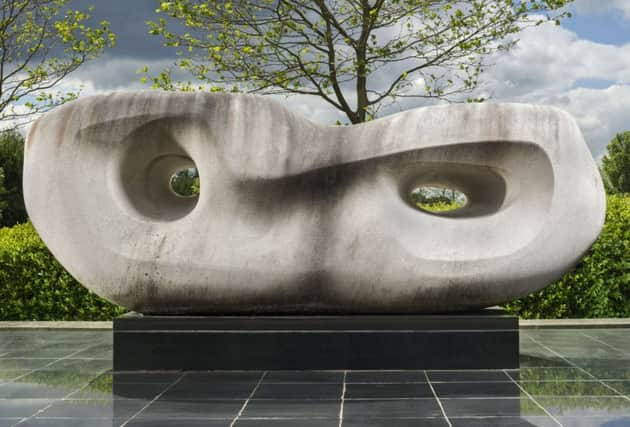Do you think Chesterfield sculpture should have special protection?


The Rosewall sculpture, based on Future Walk in the West Bars area of the town, is one of Dame Barbara Hepworth’s finest works.
In 2009, the distinctive 2.5-tonne statue was returned to the place where it rested for more than four decades – three-and-a-half years after a public outcry saved it from being sold privately at auction.
Advertisement
Hide AdAdvertisement
Hide AdThe stone is carved into heavy, curling lines around two large holes. It was named after a hill in Cornwall which is surrounded by ancient stones worn by time and weather.
Speaking of Rosewall, Dame Hepworth, who was one of the most important artists of the 20th century and died in 1975, said: “The stone is myself – looking out to the Atlantic with the sound and smell of the sea.”
For more than 40 years, the piece – bought by Royal Mail in 1963 to mark the move of its accountant general’s department to Chesterfield from London – was on public display in front of the old Chetwynd House offices at West Bars.
But the work, which took Wakefield-born Dame Hepworth nearly three years to create out of Nabresina stone, was catapulted into controversy in 2005 when Royal Mail announced it planned to put the piece up for auction after moving it to Yorkshire Sculpture Park while redevelopment took place of the Post Office pension fund’s site.
Advertisement
Hide AdAdvertisement
Hide AdChesterfield Borough Council protested and questions were raised in the House of Commons by the town’s then MP Paul Holmes before post bosses stopped the sale.
The sculpture — also known as Curved Reclining Form — was eventually bought by the borough council for £500,000 thanks to funding from charity The Art Fund, Chesterfield Waterside Partnership and other contributors.
Rosewall is one of 41 pieces of post-war public art in England to be newly-protected by the Government.
Heritage minster Tracey Crouch said: “It is only right that these fantastic pieces are listed. Not only are they magnificent sculptures but they are also an important part of our history, capturing the mood of Britain after the Second World War.”
Advertisement
Hide AdAdvertisement
Hide AdRoger Bowdler, director of listing at Historic England, said: “These sculptures were commissioned and created for everybody and have become a precious national collection of art which we can all share.
“They enrich our lives, bring art to everyone and deserve celebration.
“We have worked with the Public Monuments and Sculpture Association, Tate and the Twentieth Century Society throughout this project to ensure our most special public art is protected and continues to enhance our public spaces.”